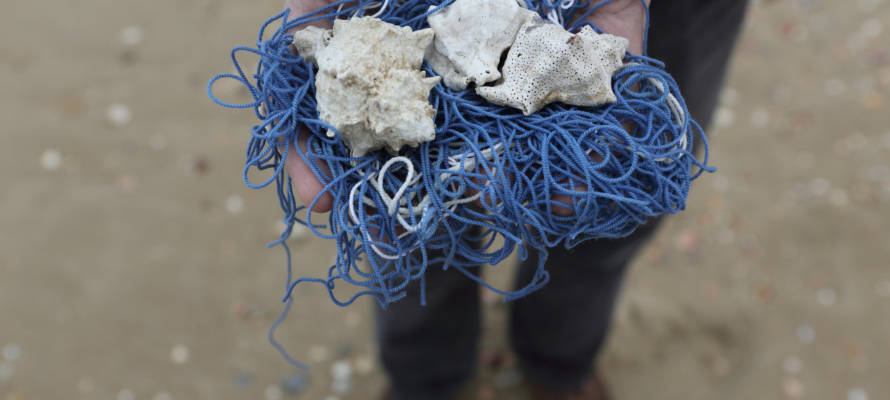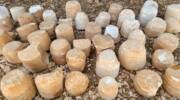Let’s learn more about these four cornered garments and how they are used today.
By Rabbi Ari Enkin, Rabbinic Director, United with Israel
This week’s Torah portion (in Israel) is “Korach” (Numbers 16:1-18:32) and it we read about Korach, the Torah’s most famous trouble maker.
Let’s take a look. The verse says “They assembled against Moses and Aaron, and said to them, “You take too much upon yourselves, for the entire congregation are all holy, and the Lord is in their midst. So why do you raise yourselves above the Lord’s assembly?”(Numbers 16, 3)
Korach and his followers challenged the leadership claiming that the entire nation is holy and therefore there is no reason for authority to be held by one person. Rather, he argues that there could and should be multiple leaders and High Priests.
The Midrash tells us of another argument raised by Korach and his people. It is actually based on something we read in last week’s Torah portion (which is this week’s Torah portion outside of Israel!). It relates to the mitzva of tzitzit and the mysterious blue string. Let’s take a look:
And the Lord spoke to Moses, saying, “Speak to the children of Israel: Tell them to make tassels on the corners of their garments throughout their generations, and to put a blue thread in the tassels of the corners. And you shall have the tassel, that you may look upon it and remember all the commandments of the Lord and do them, and that you may not follow the harlotry to which your own heart and your own eyes are inclined, and that you may remember and do all My commandments, and be holy for your God. I am the Lord your God, who brought you out of the land of Egypt, to be your God: I am the Lord your God.”
As one can see, we are commanded to tie fringes and strings to the corners of our clothing. One of these strings had to be blue. Nowadays, the use of the blue string is not widespread, a topic for another time. But according to the Midrash, Korach argued with Moses regarding a garment that is entirely blue. Must it also have the blue thread? Korach thought that such a garment should be exempt from the blue string since it is entirely blue anyways! Of course, the law is the law, and all four corners require a thread of blue no matter what color the garment is. Korach and his shenanigans are soon put to rest with the death of him and his followers.
Let’s learn more about these four cornered garments and how they are used today. There are two types of four cornered garments, the “Tallit Katan” and the “Tallit Gadol”, though the latter is general simply referred to as a “Tallit.”
The tallit katan is a fringed poncho-like garment generally worn under one’s clothes by Jewish men though some Chassidic Jews were it over their clothes (think Fiddler on the Roof). It is generally made from wool or cotton, though wearing a wool one is considered by some authorities to be more commendable. Most, however, do not hesitate to wear a cotton tallit katan if it is more comfortable. Wearing a tallit katan is not truly an obligation but one who does so receive reward for it. Indeed, doing so is the sign of an orthodox, God fearing Jew.
The tallit gadol is worn over one’s clothing, draped over one’s shoulders and it must cover most of the body. It should not be worn as a scarf as many mistakenly do. The tallit is worn by men during the morning services. It is almost always made out of wool in order to have the “wool advantage” at least while praying. However, there is an ancient custom among Spanish, Portuguese, and Italian Jews use a silk tallit.
The tallit can be of any color but it is usually white with black, blue, or white stripes along the edge. The former two being preferred by Ashkenazi Jews while the latter being preferred by Sephardic Jews. The stripes, especially the black and blue one’s are intended to be reminiscent of the blue thread, which as mentioned, is not widely used nowadays. The top neckband of the tallit is sometimes decorated, often with beautiful silver designs. The pouch in which the tallit is stored is often decorated, as well
In most Ashkenazi communities a tallit is only worn after marriage while in Sephardic communities it is usually worn after bar-mitzvah. A tallit is also sometimes used as a wedding canopy at weddings. Men are generally buried in their tallit.
Do You Love Israel? Make a Donation - Show Your Support!
Donate to vital charities that help protect Israeli citizens and inspire millions around the world to support Israel too!
Now more than ever, Israel needs your help to fight and win the war -- including on the battlefield of public opinion.
Antisemitism, anti-Israel bias and boycotts are out of control. Israel's enemies are inciting terror and violence against innocent Israelis and Jews around the world. Help us fight back!























